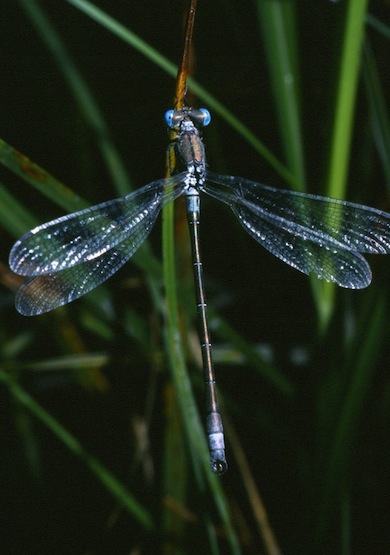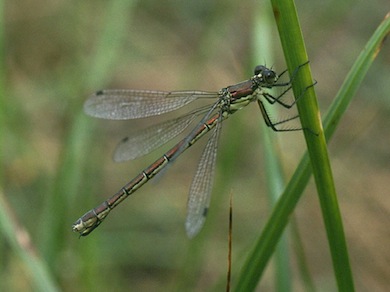The course of the River Ingrebourne is perhaps the most natural in London. At its lower end is an extensive and nationally important suite of freshwater habitats, known as Ingrebourne Marshes and managed by Havering Council as a Local Nature Reserve. These include extensive reedbeds, lakes, wet grasslands and small areas of boggy willow woodland, supporting exceptional wetland insect and bird life. Part of this area is within Hornchurch Country Park, where the river can be followed on both sides as far as Hornchurch Stadium. The upper reaches of the river are largely wooded, with important ancient alder woodlands. Large areas of herb-rich grassland are also included in the site, as are ox-bows (crescent-shaped lakes left by changes in the course of the river) and small areas of species-rich fen.Berwick Pond is an artificial lake on the opposite side of the river to the country park, with extensive reedbeds and willow scrub on its margins.North of Upminster Road, public footpaths follow the river between Benets Road and River Drive and Wych Elm Road, but do not continue as far as the A127. Beyond this, there is access to the Ingrebourne at Mount Pleasant Farm and Pages Farm, as well as from Harold Wood Park. There is no formal access to the valley north of Shepherds Hill, however.The LNR largely coincides with the Ingrebourne Valley Site of Special Scientific Interest. Havering Walking the Way to Health (WHI) uses this site; see link for details.
Local Wildlife Site
Accessible Sites of Importance for Nature Conservation
Ingrebourne Valley
Borough: Havering
Grade: Metropolitan
Access: Free public access (part of site)
Area: 266.59 ha
Description
Wildlife
The Marshes contain reedbeds noted for their abundant reed sweet-grass alongside the expected common reed, as well as many uncommon plants including small sweet-grass, nodding bur-marigold, and water and golden docks.The exceptionally diverse breeding bird community includes redshank, lapwing, hobby, water rail, kingfisher, common snipe, reed bunting, cuckoo, long-eared owl, reed and sedge warblers, gadwall, teal and pochard, as well as irregular marsh and Cetti's warblers and bearded tit (London's only recent breeding records for the latter two). Large numbers of teal and tufted duck occur on Berwick Pond in winter, while a long list of species pass through in spring and autumn on migration.The diverse insect population includes a nationally rare damselfly, the scarce emerald, as well as many other nationally scarce species from various groups. Amongst these are many burrowing bees and wasps that mainly occur around the Thames estuary.Berwick Ponds are also important to foraging bats, with at least four species regularly present. A strong population of specially-protected water voles is present throughout.Facilities
Car-parks. The London LOOP covers parts of the Valley.
Scarce emerald damselfly, male © Mike Waite

Scarce emerald damselfly, female © Mike Waite
Feedback
Have a question or a comment for this site, or notice anything missing or out of date? Please contact us.
